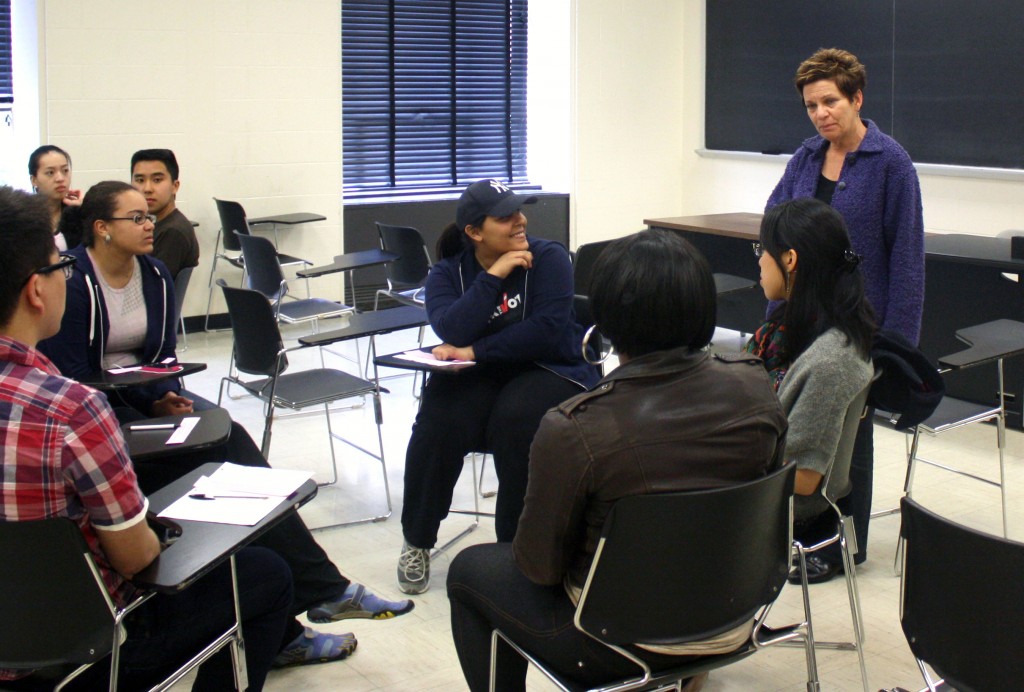
Heidi Thirer, a professor of health and wellness at Binghamton University, shared a lecture titled “Reducing the Risks: Safer Sex” on Friday in the Fine Arts Building.
Thirer chose the name of the presentation because she believes all acts of intercourse have risks.
“It’s called safer sex,” Thirer said. “There is no safe sex. I have a picture of safe sex: It’s two safes, two safes having sex.”
Thirer divided the 16 attendees into three groups and gave each a different scenario to discuss: sexually transmitted diseases, timing sex with the menstrual cycle and morning-after pills.
Thirer said she does not believe in teaching only abstinence.
“People are going to have sexual relationships.” Thirer said. “If you don’t give them another option, then there’s no protection. You have to give people another option. In wellness, we call it risk reduction.”
She said it’s important for students to be informed.
“I’m not going to scare you,” Thirer said. “I’m here to give you information, so you can make better choices.”
Thirer added that she believes a major barrier to safer sex is communication. She said one example was students who are afraid to bring up condoms in a hookup situation.
Some attendees disagreed and said they don’t consider communication an issue.
Carolyn Burgos, a senior double-majoring in economics and sociology, said she thinks people do not have a problem suggesting to use condoms. Cinnamon Thomas, a senior majoring in marketing, agreed.
“Especially if you don’t know the person, that’s disgusting,” Thomas said, referring to not using a condom.
Throughout the presentation, Thirer discussed how condoms fail to protect users against STDs that spread through skin-to-skin contact, such as herpes. She also discussed asymptomatic diseases that are not manifested outwardly.
As part of her presentation, Thirer passed out two different types of condoms — one latex and one polyurethane — for students to compare. Thirer explained that the downside of polyurethane condoms is that they are not as flexible and can easily fall off.
She also said there are many benefits to using female condoms because they are just as effective as male condoms in preventing viral transmissions and that a woman can insert the female condom hours before intercourse.
“Can you imagine going down to State Street with this one?” Thirer said, as she presented a female condom to laughing students.
She said female condoms are not typically used, as they are more expensive and people do not like the look of them.
Regardless of the situation, Thirer encouraged students to be prepared and use condoms.
“Vows of abstinence break far more often than condoms,” Thirer said.
Finally, Thirer suggested that women keep a morning-after pill in their room because she worries that the need to take a bus to purchase it the next morning may discourage many from taking it after a contraceptive failure.
Students who attended the seminar said it was much different than the cut-and-dry lecture they expected.
Students also said that they liked Thirer’s distinction between safe sex and safer sex.
Aylon Pesso, a senior triple-majoring in history, Judaic studies and philosophy, politics and law, said that despite his four years in college, there were still some things to be learned.
“This was a great opportunity because, at this point, we are seniors in college and throughout all our years and through health classes, there’s still things we don’t know,” Pesso said.


